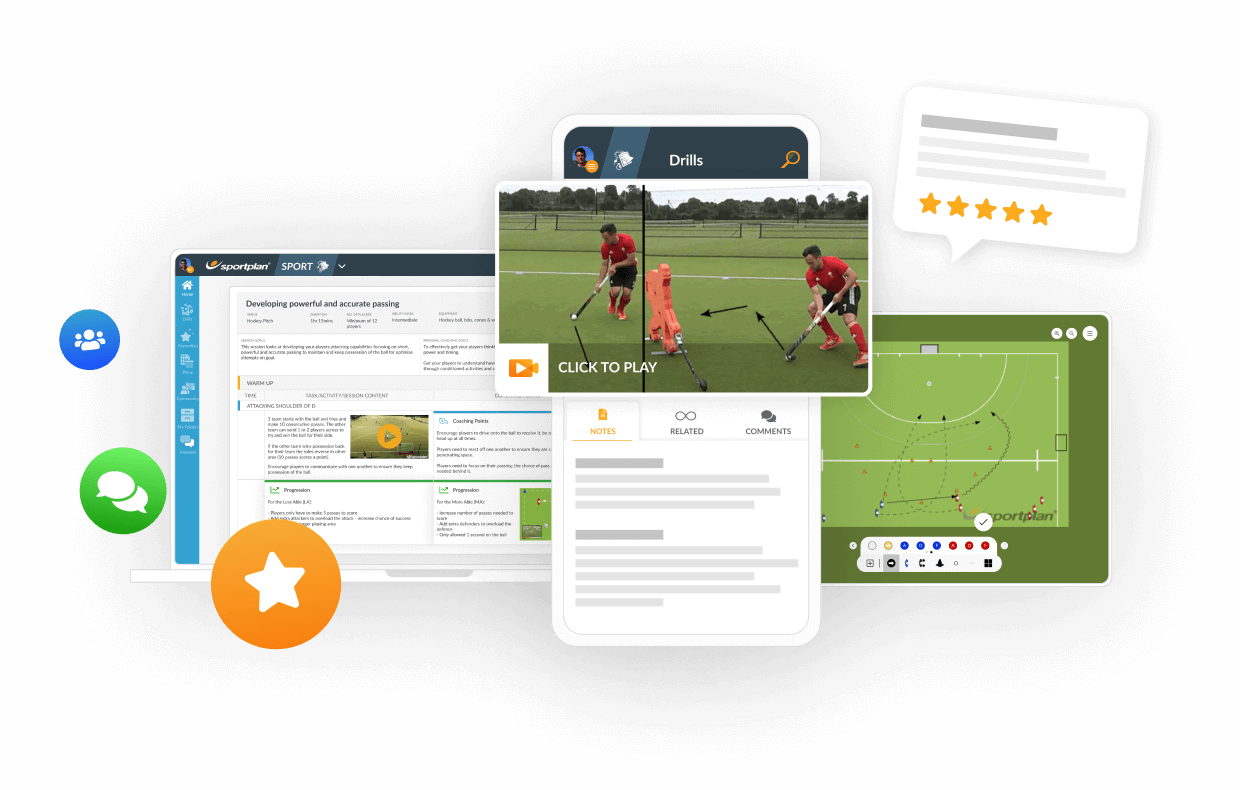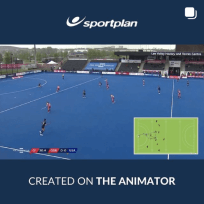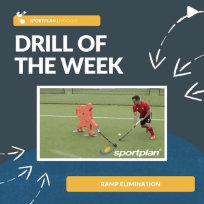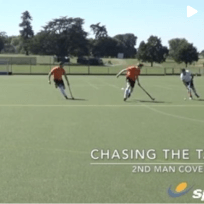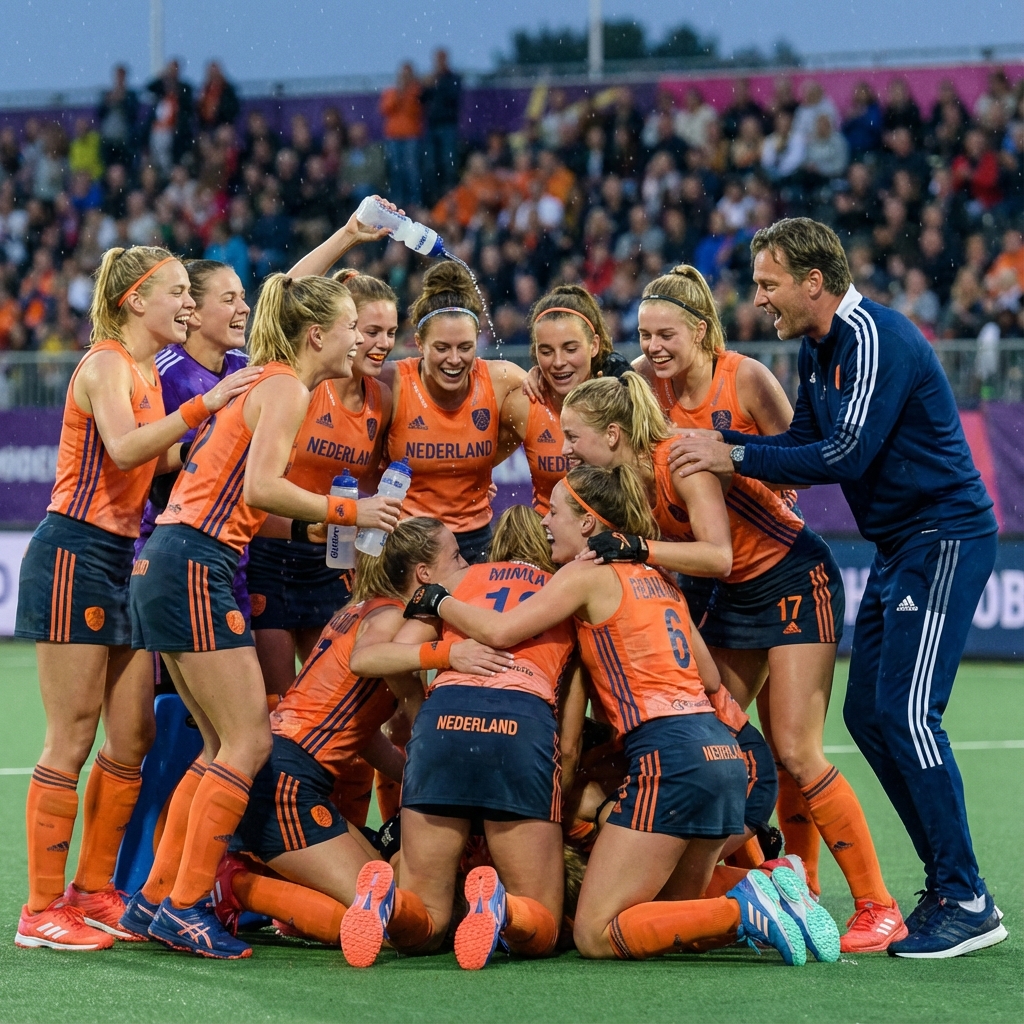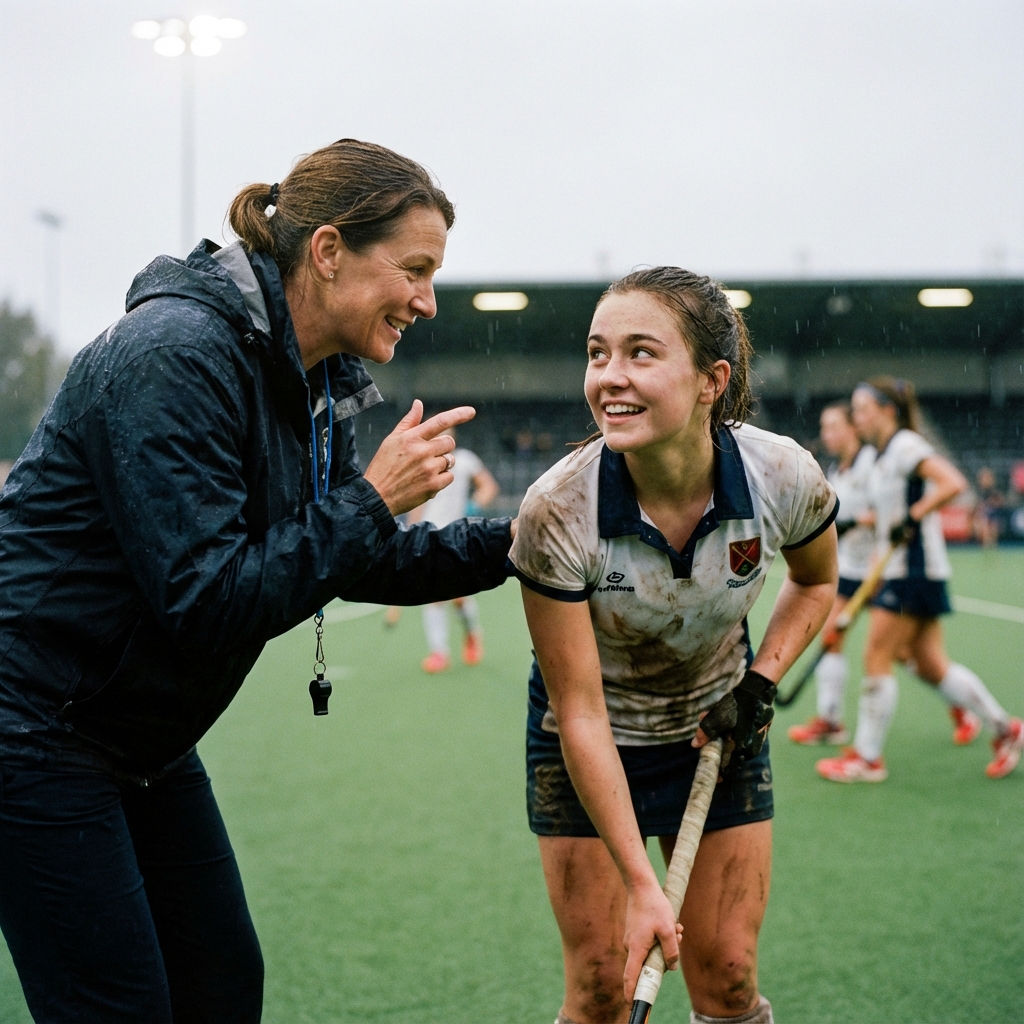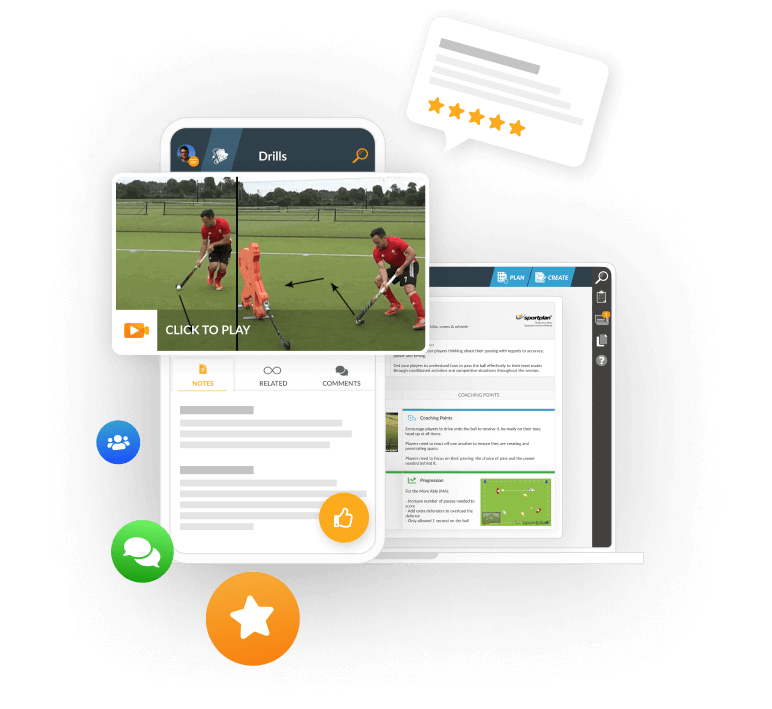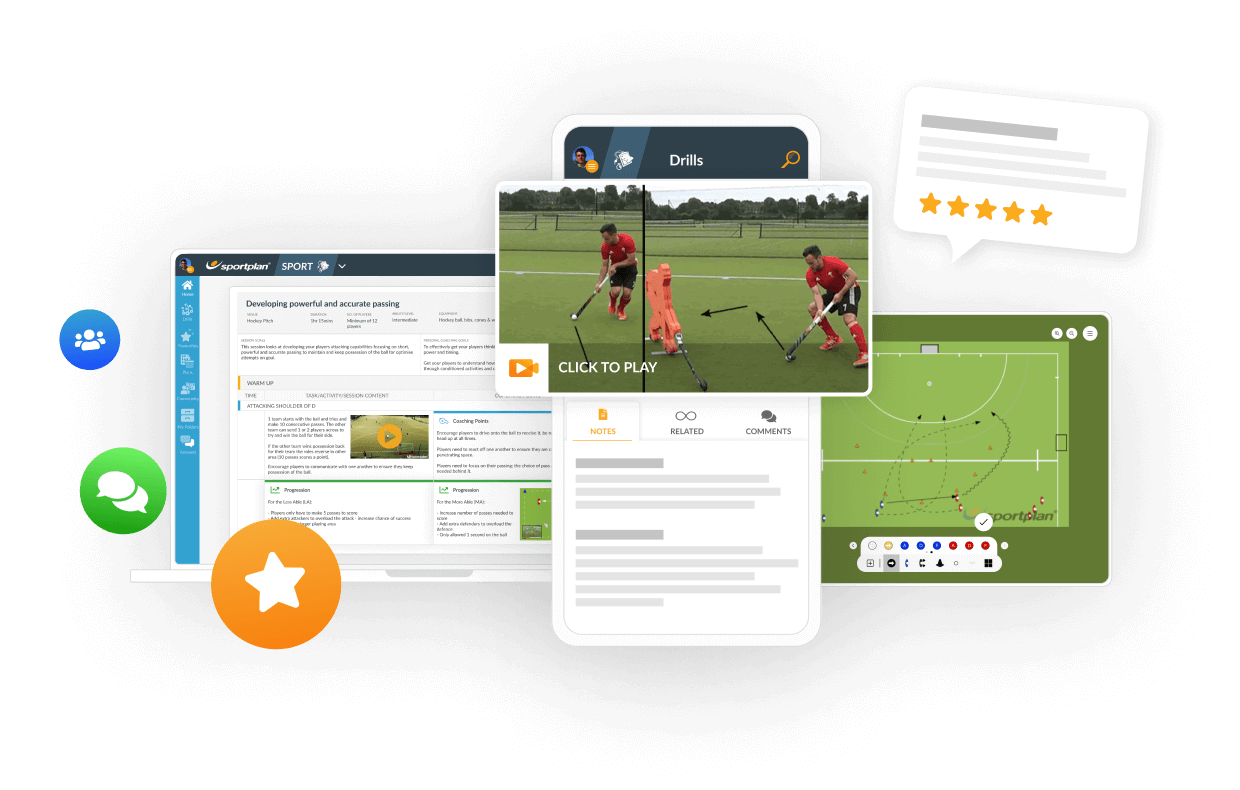Best way to teach shape and positional awareness to U12s and U13s?
hi allI'm currently coaching 12 and 13 yr olds and the team has a massive problem with shape and being disciplined positionally.Any tips, ideas, drills etc for helping with / teaching this?many thanks,Gary
Hi Gary! I guess one of the difficulties working with this age group is the limited amount of attention they have in any given moment. It can be very difficult for them to not only keep up with the game but the skills as well. It may be that you need to isolate this issue and work on it exclusively. For example when teaching hitting, at first you might isolate the skill in a drill and then as they get more experienced they progress to more difficult game like scenarios.
In my opinion Teach Games For Understanding is a very useful tool to help teach basic tactics to kids. TGFU has been around a fair while and isolates/works on the problems you've identified. In TGFU you might play modified games that don't use sticks etc even to teach offensive concepts such as height to stretch the game, depth for support and turnover defence etc. The games are also a lot of fun! It allows the players to use their limited attention in a moment to focus on the tactics.. as the skills of these games might be very easy, ctaching and throwing a chest pass for example. But the tactics are similar to Hockey. You might also make the games very small sided to make it simpler and make it easier for the players to notice errors in their decisions around positions.
There are plenty of books out there that can explain this far better than I can... http://www.humankinetics.com/products/all-products/transforming-play:-teaching-tactics-and-game-sense
I hope that helps somewhat!
Cheers :)
Thank you VERY much for the info Steffan.
My own observations are that, at one level, it's to do with understanding a given role and then remembering what skills and techniques to apply at the right time, etc (ok... I know this is rather a top-level analysis and there's a lot of detail which I'm skimming over).
Having a firm grasp of fundamental skills / principles - for example, closing down the player with the ball - ingrained in a player i.e. knowing and doing the basics well... I think will help a lot. There's just sooooo much to teach at the moment :(
Another problem is a lack of general awareness, self-awareness, vision & communication. For example, "Am I standing in the right place for the current situation?" etc etc. All these plug into the game process... and I wonder how much I can necessarily expect from my students.
Trouble is, we've just started in a league this season where the playing schedule is hugely demanding (a match every other week). Note this is a development league but the opposition still seem really rather good. I actually feel that I don't have enough training sessions to allow the kids to gain knowledge⦠and thereâs so much for them to take onboard at the moment. I know that focusing on the basics will create a good foundation for the students but then I feel compelled to try and address higher level stuff, because that's what I also see going wrong in the games (forget about pre-requisites like moving into space and passing accurately and with quality of technique!!).
The biggest problem though is I have very inexperienced players in my team (so they are a bit out of their depth during matches) and have, pretty much without, fail played against teams who are more experienced. It's galling because, in training, I definitely see the glimmer of positive attributes in players but I'm resigned to players developing at their own rate - obviously the quality of coaching and amount of practice they get will speed up the process. I guess I'm saying that there's only so much you can attempt to teach - they will absorb and learn and gather understanding at whatever rate they do it at.
I will definitely look at the title youâve suggested though - even if it just inspires me to make some drills of my own, itâll be a step forward.
Thank you so very much for your input.
All the best,
Gary
Hey Gary
I guess given the age/experience of the team you might really have to focus in on the absolute key parts of the offensive and defensive game. Try and pick out as few things as possible, maybe three for each.
So for example defensively with one of my teams we just hammered defending the middle, so where should we stand, who should we mark (maybe not the guy running to the corner) how should we postiion ourselves when standing etc...??? Practice bahaviour was simply working hard, we got the guys to measure heart rate, used our own observation but a lot of the time just asked them whether or not they were training hard enough to get better. Theres a little more too it but it's simplistic, We can measure it and it's important. we managed to halve our goals against
Or perhaps it might be an idea to think about where you would like them to be at the end of the year, what behaviours/skills/knowledge they should have and how you might develop that? For a few it might just be that they are still continusing to give it there best and they are still enjoying it.
I think if you ask these questions of yourself as well as reviewing how it all goes you cwould be on the right path. I've done plenty of things that er... might not have been the best thing to do... euphemistically speaking but hopefully I learn!!
Just some ideas, theres no right or wrong way, but I think if at the end of the season if all the kids have learnt some key things about Hockey and they want to come back since they had fun then you've done a great job and you can pass them on (or not) to the next coach.
Cheers
Steffan
Hi Gary
How about marking the pitch into the formation that you play. It's easier to explain with a 3-3-3-1-GK formation:
The pitch is divided into LT / MID / RT and FWD / MID / DEF. You then put a player of each team into each section. To start off with - they can only tackle or play within that area. As a progression you can then have them switch sections, but there can still only be 1v1 in a section.
Hi Erica.
Firstly thanks for replying.
Secondly, that thought had crossed my mind too (to use boxes or sections). I'm sure I've seen a drill on here, which is to teach overloads... with the playing area divided up into boxes and players are restricted to 1 section each, unless attacking, where an adjacent players can cross boxes to create an overload (only permitted way for ATT to beat a DEF).
However, by allocating an area to a player I was concerned about how to introduce idea that in fact player zones overlap i.e. LEFT DEF will actually need to enter and use LEFT MID zone, as team moves up pitch.
Good suggestion though and the more I think about it the more it would serve as a foundation for relative positioning. Also, I might as well try it, since I'm having virtually nil success overall lol... and it might well also introduce some awareness, which is the first step to keeping track of what's going on, where you are, what do I do now, etc.
Cool!
Thanks,
Gary
Hi Gary - really good discussion thread.I wouldn't worry too much about players overlapping at this age...
I found that there is not just one method that addresses your question. I found using many technqiues has helped. This also helps with kids learning in different ways.
1. At this age, the teams should be playing in smaller sized games, e.g. 6 a-side (or similar). Here, explaining positions is easier. However at U13's 11 a-side matches (esp. at county level) are usual.
2. During training matches, I would ask other coaches/volunteers to umpire and you (or a coach), walk around during a game and give guidance to players (calmly without distracting too much attention from the game)
3. White board - if you have a portable one, then use it - this helps with visual learners
4. If you can win parents and players, try indoor hockey, very fast, lots of fun, and kids will learn very quickly
5. Just focus on 1 or 2 positions in each training session and make sure all players have a go
So much more to say on this discussion thread, but I hope this helps.
BTW and I'm sure you may know this, but England Hockey require players to know the old 5-3-2 formation. A white board session before each routine is very useful.
This season, I now help U14's and the learning of positions just continues, it's ongoing...
Good luck
Manny
Hi Manny
Great to hear from you and thanks for your input on this subject.
My U14s played a match on Sunday and i tried to use the pitch quarters as an approximate guide of how far to go.
I think overlapping / moving into other players' zones will have to be addressed because my Left Mid (bless her) had actually been listening but took my instructions literally and instead of tracking her player into our circle, she stopped dead on our quarter line because I'd said mids typical playing would probably be between the quarters (this was obviously a very crude rule of thumb). It was just so comical to see her stopping dead, so she didn't step across the line, I could only smile and explain that she can going into our quarter, if need be lol.
I like your suggestion of moving between players during training to offer direct guidance but am a bit short-handed normally. I do frequently run coached games, so just think I need to do a session on positioning.
I've got an A4 whiteboard and believe me I've used it... but the problem is that I see in an awful lot of players that they lapse into their core habits during matches (and it takes a higher level player to be able to consciously be aware and to be able to adjust what one's doing wrong).
This is why I mentioned that shape is actually strongly bound to your awareness of what's going on around you... and why I'm also trying to encourage communication, since even at adult level, players still get steered by their colleagues... with a "step left" "step right" etc.
I do sometimes think it is the age of the person too... since ball watching is still pretty evident, as is simply not thinking about what might be happening elsewhere on the pitch. In fact, maybe doing some exercises where you're having to deliberately marking / tracking someone who's behind you at all times, might be handy - if I can get people to start scanning in the opposite direction to their vision, that might add a technique which would help shape. Don't know if that sounds a bit tenuous - it seemed to make a little sense to me!
All the best,
Gary








